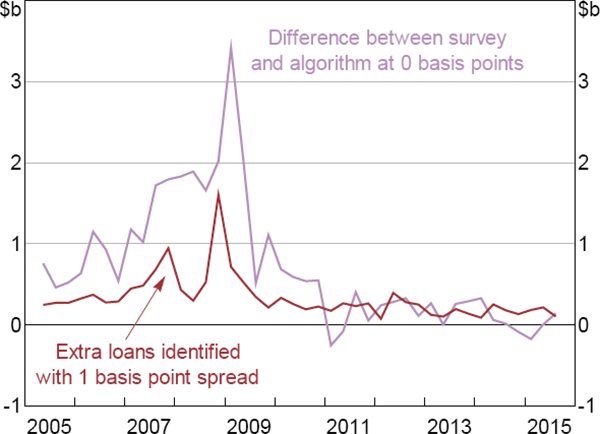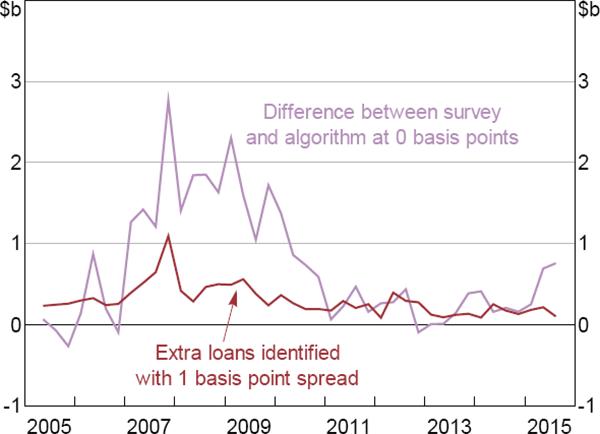RDP 2016-11: Identifying Interbank Loans from Payments Data Appendix C: Expanding the Interest Rate Range
December 2016
- Download the Paper 3.19MB
This appendix provides some information on the impact of expanding the interest rate range beyond zero (as is done in the existing literature).
Allowing for a ±1 basis point range in the Furfine-type algorithm slightly improves the correlation of aggregate lending between the survey data and algorithm output (from 90 per cent to 91 per cent). However, this may be driven by an unrelated level effect rather than actually capturing more IBOC loans.
To explain, expanding the range captures more loans during the 2007–09 period (when our algorithm is least accurate) than during other periods, which improves the correlations and the proportions of loans identified (Figures C1 and C2). However, after extracting the level effect, the daily lending correlation is lower with a ±1 basis point range than with a 0 basis point range (by 0.36 percentage points), while the borrowing correlation only marginally increases (by 0.02 percentage points).[56] Moreover, expanding the range worsens the major banks' lending and borrowing correlations and increases the proportions of loans identified for the major banks to over 110 per cent (from 101 and 104 per cent, respectively).[57]
It is possible that, in expanding the range, we are capturing some other form of lending (term lending, for example), and that it is just a coincidence that the increase in this lending occurred at the same time as our algorithm's accuracy fell.
Allowing for a ±5 basis point range unambiguously worsens the algorithm's fit relative to the ±1 basis point range.


Footnotes
To extract the level effect, we add quarterly constants to the algorithm data such that the average quarterly values for the algorithm output and the survey aggregates are the same. If the daily correlations were still higher with the ±1 basis point range, this would provide evidence against the improved fit being the result of an unrelated level effect, and we may actually be capturing more IBOC loans. [56]
Recall that a small over-identification for some banks could be due to these banks transacting on behalf of other client banks (see Section 2). [57]